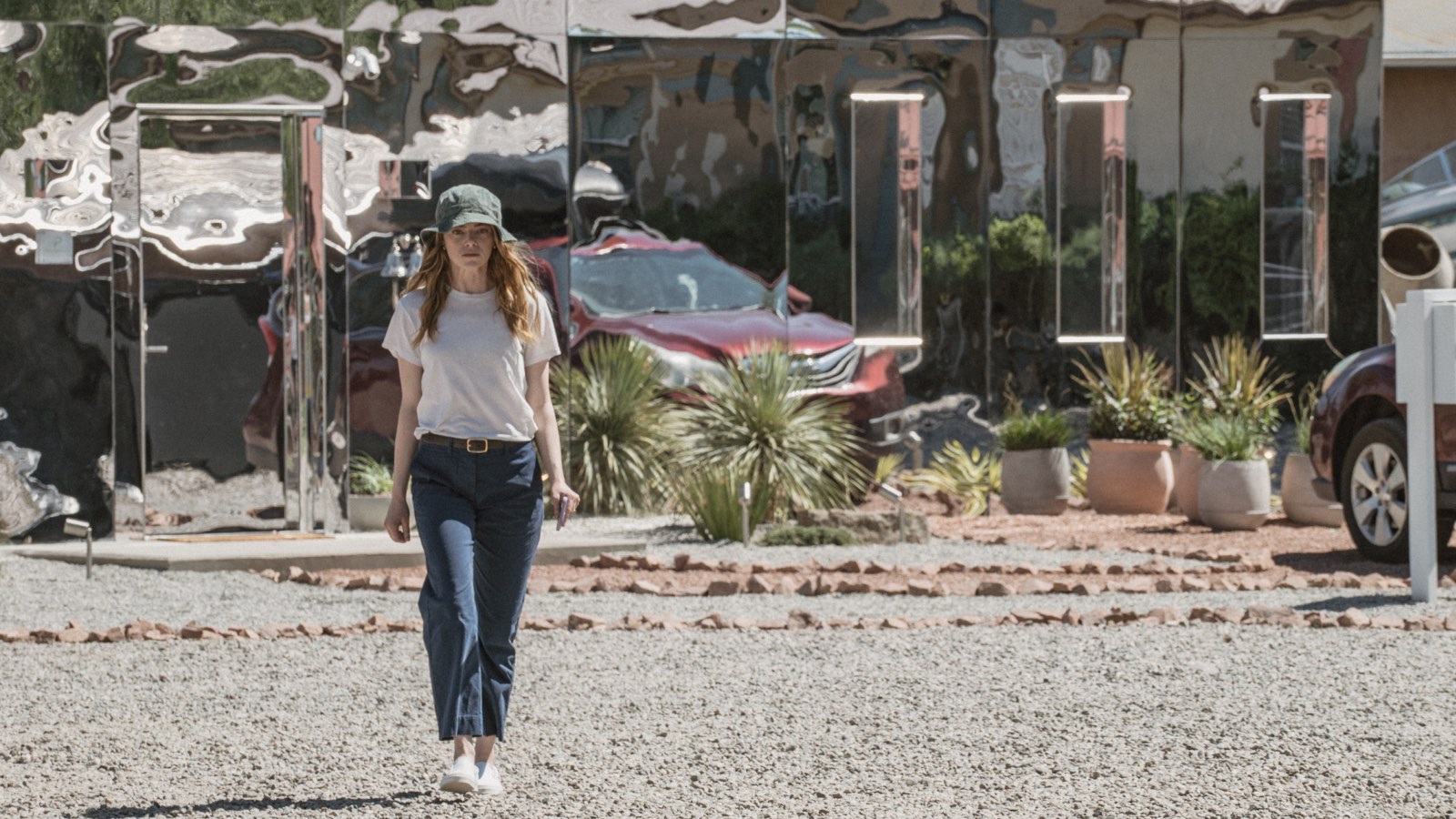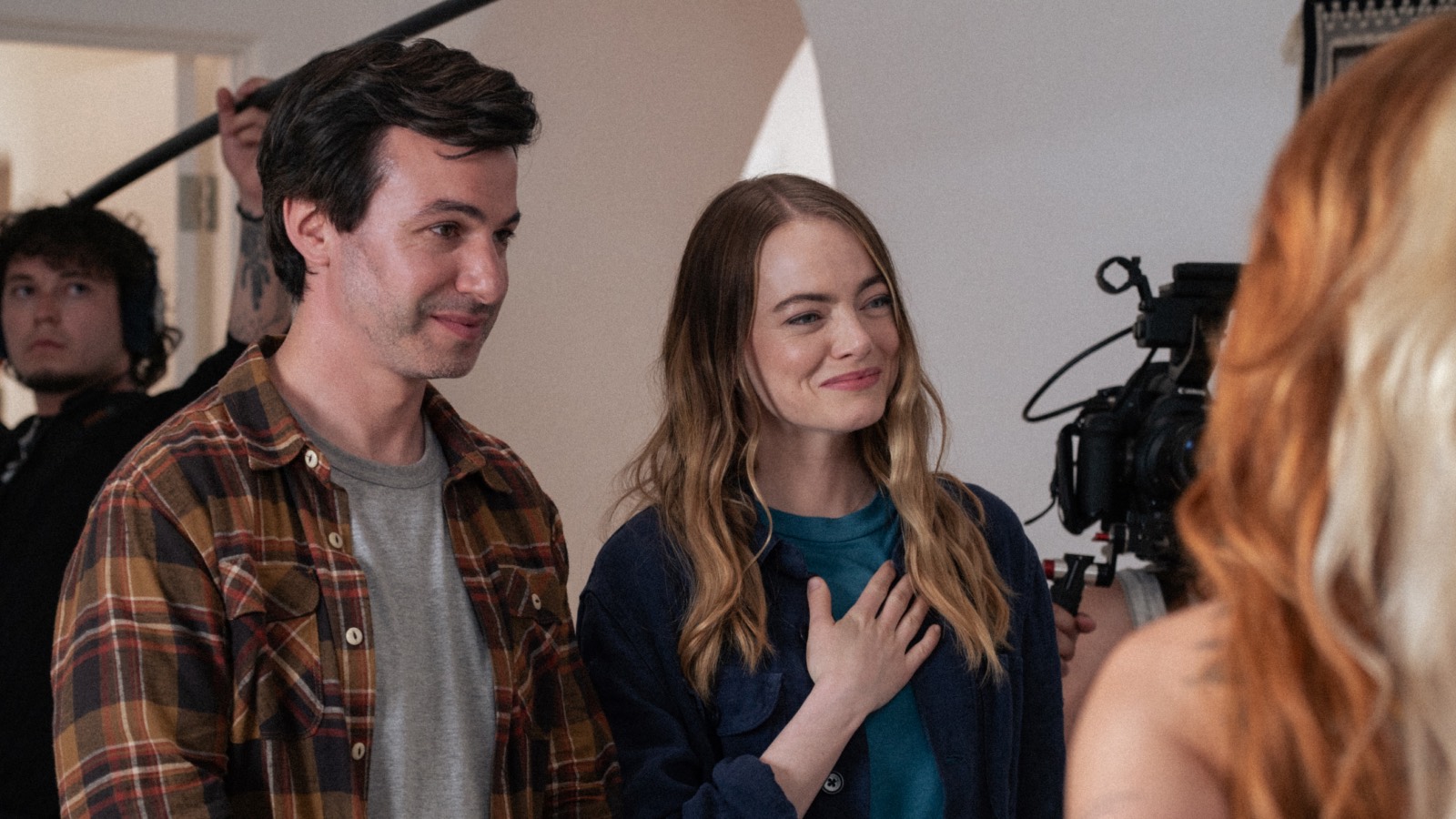In the first scenes that we spend with Whitney Siegel, Emma Stone’s character in The Curse, she is assuring everyone around her that she is a good person. She tells us that she is bringing jobs to a struggling community, personally subsidizing her neighbors’ rising rents, upholding the work of local artists — all in service of a “holistic home philosophy” that surrounds her self-designed and -developed carbon neutral homes.
The insistence is both ominous and unsettlingly familiar. A common critique of the environmentalist is that she is out of touch; she demands too much; she does not understand the day-to-day life and demands of everyday folk. She is an idealist, too concerned with abstract and/or distant concerns — the atmosphere! the deep sea! the future! — and at the same time overly preoccupied with inconsequential and less-than-thrilling things: LED lightbulbs, proper separation of recyclables, low-flow toilets.
Perhaps this description makes you, if you are an environmentalist, uneasy. It’s an unflattering reflection, to be sure — but that discomfort is the currency of The Curse, a new Showtime series from directors Benny Safdie and Nathan Fielder. The plot surrounds Whitney and her husband Asher Siegel (the latter played, to horrifying effect, by Fielder), who are trying to parlay their Doug Aitken-ripoff passivhaus properties into an HGTV reality show starring themselves.
Although the show quickly gained a cult following, it has also been described using phrases such as: “the hardest to watch thing I’ve ever seen,” “physically curled in pain,” and “weekly anxiety nightmare.”
Energy-efficient insulation and circular plumbing may not seem like the stuff of nightmares, but the show is so distinctly unsettling because it exposes its characters as their absolute worst selves. And it’s Whitney, a dedicated ambassador of the carbon-neutral lifestyle, who gradually reveals herself to be the most ethically warped, self-serving, malicious character on a competitive roster.
Why does someone who has committed their career — their entire public image, no less — to building climate-friendly homes make such a believable monster?
I chatted with Jennifer Bernstein, editor-in-chief of the journal Case Studies in the Environment, who watched the show, to try and parse what exactly makes Whitney’s environmentalist protagonist such a disturbing character. She observed that it’s “this lack of self-awareness paired with this idea that her idea of the good life has some moral high ground and should be everyone’s idea of the good life.”
Indeed, those who oppose environmentalism and its purported ideals tend to reference a desire for control: They want to take away your gas stoves, your burgers, your trucks. Some of Whitney’s eeriest moments, exposing a self equal parts desperate and domineering, occur when she attempts to explain the gospel of her eco-living mission. When the buyer of one of her passive homes disconnects the expensive induction stove and replaces it with a gas one, breaking the self-contained “passive” ecosystem of the home, Whitney insists to Asher that they need to be “more discerning” about who they’re selling their homes to; that some people “do not deserve to be part of what we’re building.” She tells a couple making an offer on another home, when they intend to put in an air conditioning unit that would also void the house’s passive certification, that they’re throwing away an opportunity to be “members of a very exclusive club,” “part of history.”
It’s impossible to argue that an $800,000 eco home isn’t a marker of some degree of elitism. Not all trappings of a green lifestyle are expensive, but those of a type of green lifestyle certainly are. Whitney and Asher repeatedly attempt to reassure residents of the working-class New Mexico community where they build their homes that their developments are not a force for gentrification — an assertion so obviously false that what’s unclear is whether they’re lying to themselves or their neighbors.
Passive homes are kind of the archetypal example of a climate solution that makes a lot of sense, but one that also requires a lot of money. The reduction in energy usage that a passive home can provide, compared to the average drafty house, is as high as 90 percent. Residential energy is responsible for about 20 percent of greenhouse gas emissions in the United States, so that’s not an insignificant offering. But as Project Drawdown points out in its analysis of insulation as a climate solution, the embodied emissions in actually building passive houses that can withstand hot climates (like the Southwest, for example) makes the potential energy savings less appealing.
Des Fitzgerald, an expert on green urbanism at the University of Cork’s Radical Humanities Laboratory, says that a significant contingent of the environmental movement has a blind spot around status and expense associated with eco-living. Green development in a community will more often than not inflate property values, driving out lower-income residents. But Fitzgerald also explains how a sort of assumed supremacy of an environmentally conscious way of life can drive people away as well.
“So much of the public discourse around the use of environmentally-friendly materials in housing, and planning more generally, really grounds itself in being empirically rigorous and well-grounded in research,” said Fitzgerald. “The reality is, a lot of attachments people have to this as a form of living are not really scientific or rigorous or empirical. It has this symbolic, quasi-religious quality to it — and I think it has to do with those deeper associations we have with green stuff and status.”
In other words, a green lifestyle is as much defined by actions that are proven to reduce emissions as it is by talismans and touchstones of sustainability — and, as often as not, those talismans become status symbols more than legitimate climate solutions. Claire McNear for The Ringer brilliantly clocks, for example, the eco-accessories of Whitney and Asher’s “certain breed of moneyed class anxiety”: the Tesla, the New York Times-featured Birkenstocks.

Is there anything uglier than an aspiring cult leader with no charisma? About halfway into the series, Whitney retitles their show “Green Queen,” happily shunting Asher aside and making herself the star. But any passion for “green” values appears limited to her aspirations for fame and recognition. Bernstein, for example, notes that Whitney never once talks about climate change, or nature, or anything remotely related to the environment away from the cameras.
The 10th and final episode features an effort to publicize the couple’s show to a mainstream audience, where they make a bizarre appearance on the Rachael Ray Show. Asher and Whitney loom on a large screen behind a host who briefly interrogates them, bored and half-engaged, on the many ways in which a passive home is unappealing to the average American: You can’t have air conditioning, or a basement for your husband’s TV, or yes, gas stoves.
Whitney’s smile becomes increasingly tense. Is she struggling not to snap, to berate Ray and her middle American audience for prioritizing their shallow preferences above saving civilization from devastating climate change — a fate from which she, the Green Queen, is offering salvation? Or is she mourning yet another failed opportunity to get viewers for the show?
Whitney’s own personal curse is that she simultaneously embodies two wretched archetypes of green lifestyle advocates. The first is that of the green influencer, who preaches about climate change while making money from convincing you to buy stuff — the right stuff, though — and profiting off the consumerist culture that is the mortal enemy of environmental progress. The second is the aforementioned eco-tyrant, who wants to ration your water and electricity and beef. We are repulsed by the first because she’s a hypocrite, and by the second because she’s a bossy control freak.
There’s no doubt Whitney is unlikeable, but it’s not just because of her personal qualities. There’s a part of us that wants environmentalists to be frauds and fascists, because we want them to be wrong. We want their claims about the climate-saving value of low-impact homes and plant-based diets and electrifying everything to be ridiculous. Because if they are right, then we have to transform so many things about our homes and diets and economy and overall ways of life to forestall apocalyptic ecological collapse.
But what if the frauds and fascists are, on some level, operating on a belief system that is fundamentally right? That more or less defines the moral that weaves through The Curse’s most surreal moments: that people can really mean well and want to do good in the world, and still be awful and self-serving; that ego and desire for power and status can still propel the most ostensibly ethical mission. And when something righteous is driven by something rotten, can it ever actually do good? Or is it just cursed?



